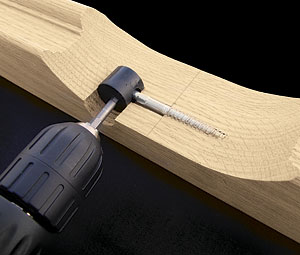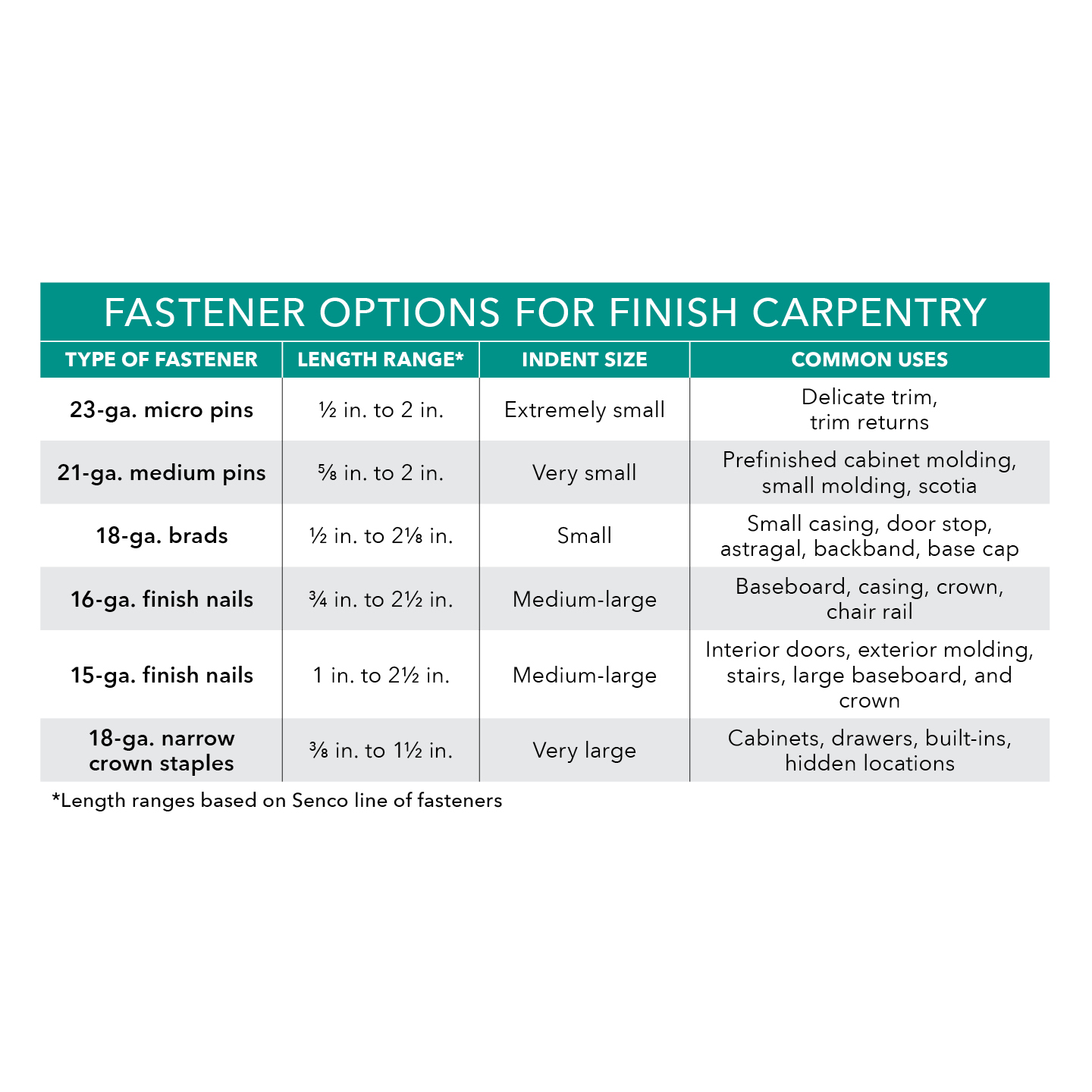
• Manufactured by Cooper Stairworks
• 508-235-4397; www.cooperstairworks.com
• Cost per nut/bolt set: about $2.30
One of the trickiest parts of installing stairway handrails is attaching the easings, volutes, and goosenecks to the straight sections. For the past 150 years or so, this connection has been made with a simple rail bolt, which has half its length threaded to screw into wood and the other half threaded to accept a 5/16-in. nut. Screwing into wood is easy. But threading a nut onto the other end of the bolt while it’s buried in a 1-in.-dia. hole, then fitting a wrench in the hole to draw the parts together, is downright aggravating. The Zipbolt system eliminates some of this hassle.
Zipbolt uses the same drilling configuration as standard rail bolts, but rather than requiring the traditional washer and nut, Zipbolt includes a small enclosed gear box with a washer and nut inside. The gear head slides into the same 1-in.-dia. hole that normally houses the washer and nut, but you don’t need a wrench for this system. Just chuck a cordless drill with a hex-head driver bit, and snug the two rail sections together tightly with a pull of the trigger.
At first, I was afraid Zipbolt’s mechanics would not be strong enough to ensure a solid joint. But I found I could pull parts together firmly, twist them into their final position, then give one more squeeze of the trigger to lock them in place. I haven’t been able to twist any out of alignment.
The only hurdle is that I am accustomed to the wiggle room that traditional joinery methods allow, and the well-machined and matched Zipbolt is less forgiving in hole depth and placement. If holes aren’t placed properly, the rail doesn’t align properly. But a little more care in hole placement is an easy trade-off for not having to thread and tighten that little nut every time.
Photo: Courtesy of Copper Stairworks

























